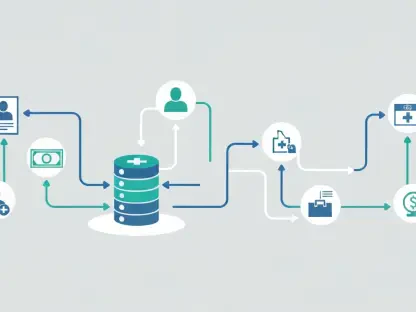The rapid evolution of technology has led to a transformative convergence of Artificial Intelligence (AI) and the Internet of Things (IoT), fundamentally reshaping the realm of edge computing solutions. As these technological juggernauts merge, they pave the way for environments capable of intelligent interactions with their surroundings, thereby enhancing efficiency, responsiveness, and automation. This article delves into the revolutionary aspects of AI integration with IoT, using the SenseCAP Watcher by Seeed Studio as a lens to examine how these advancements are catalyzing new developments in edge computing.
Businesses and developers are increasingly embracing AI-driven IoT solutions to optimize operational processes and improve real-time responsiveness in dynamic environments. The advent of generative AI and large language models (LLMs) has further accelerated this trend, culminating in what’s often termed AIoT (AI and IoT). This amalgamation leverages small language models and on-device models, performing intricate tasks at the edge to minimize latency and reduce bandwidth usage. As enterprises begin to harness these capabilities, the industry is witnessing a paradigm shift that significantly enhances the scalability and flexibility of deploying IoT applications.
The Intersection of AI and IoT: A New Era
The convergence of AI and IoT marks the dawn of a new era where edge devices can process real-time data more effectively and make autonomous decisions devoid of constant cloud connectivity. This fusion—coined as AIoT—has profound implications across industries, where its responsiveness and concurrent processing capabilities promise substantial gains in efficiency and performance. The potential of AIoT is expansive, with applications ranging from autonomous vehicles and smart homes to industrial automation, pushing the boundaries of what edge computing can achieve.
Businesses are actively exploring AIoT to unveil novel applications that not only enhance operational efficiencies but also elevate customer experiences. By executing data analysis and decision-making in real-time, organizations can drastically improve their ability to respond to environmental changes and user inputs. This seamless integration also allows for greater versatility in scaling IoT solutions, adapting to the specific needs of various use cases without compromising performance. Emerging trends in AIoT reveal a shift toward increasingly sophisticated AI-driven solutions, leveraging edge computing to deliver faster, more dependable functionality. Consequently, developers now have the tools to craft smarter, more interactive edge devices capable of real-time processing and analytics, propelling the next wave of technological innovation.
SenseCAP Watcher: Advanced AIoT Hardware
A compelling example of advanced AIoT hardware is the SenseCAP Watcher by Seeed Studio. This sophisticated device boasts numerous key components that function cohesively to offer superior environmental monitoring and interaction capabilities. The OV5647 camera module, integral to the Watcher’s hardware arsenal, enables advanced computer vision functionalities, facilitating real-time analysis of environmental conditions. Complementing this is the built-in microphone and speaker, which support fluid voice interactions, enabling users to issue commands and receive audio feedback seamlessly.
Additionally, the 1.46-inch touchscreen serves as the prime interface for user engagement, providing an intuitive means of navigating settings and features. The ESP32-S3 platform undergirds proficient communication through Wi-Fi and Bluetooth Low Energy (BLE), while the Himax HX6538 chip—with its Cortex M55 and US5 cores—empowers the Watcher to execute local AI tasks and TinyML models. Moreover, the device is equipped with a USB port and MicroSD card slot, expanding its functionality by facilitating charging, data transfer, and storage expansion. This well-rounded hardware design underscores the AIoT device’s potential to impact various real-world scenarios profoundly.
A Versatile Software Architecture
The SenseCAP Watcher is powered by the SenseCraft AI platform, a robust software framework that orchestrates tasks, processes data, and facilitates user interactions. This platform supports hybrid processing capabilities, utilizing both on-device AI models and cloud-based LLMs. Key components of the software framework include task orchestration services and visual data analysis tools.
Task orchestration services handle tasks initiated via voice commands or the SenseCraft Mate app, processing them through an HTTP interface for AI model execution. The Watcher’s visual data analysis tools enable versatile image analysis and object detection, leveraging either local models or third-party AI services. This flexibility allows users to optimize task processing based on specific requirements such as speed, responsiveness, and complexity.
Integration with popular IoT platforms like Node-RED and Home Assistant further enhances the Watcher’s utility. These platforms enable complex automation and data flows, streamlining the development of intelligent IoT solutions. The Watcher’s software architecture exemplifies how AI integration can elevate the functionality and efficiency of edge computing devices.
Key Applications Across Sectors
The SenseCAP Watcher’s advanced capabilities make it suitable for a wide range of applications across various sectors. In smart home environments, the Watcher can monitor activities, detect unusual behaviors, and send alerts to enhance security. Its ability to integrate with other smart home devices allows for comprehensive automation, making everyday tasks more intuitive and efficient.
In retail settings, the Watcher offers valuable insights into customer movements, helping businesses optimize store layouts and improve customer engagement. This real-time data analysis enhances the retail experience by tailoring it to individual preferences and behaviors.
Industrial automation is another area where the SenseCAP Watcher shines. By serving as a behavior sensor, the Watcher provides real-time insights into equipment status and workforce activity. This information can help reduce downtime, improve safety, and enhance overall operational efficiency. The Watcher’s versatile applications demonstrate the transformative impact of AIoT.
Conclusion
The SenseCAP Watcher showcases a significant leap in the AIoT (Artificial Intelligence of Things) domain by seamlessly integrating AI with IoT (Internet of Things). This innovation uses a hybrid processing approach, combining versatile hardware with flexible software architecture. This integrated system expands the scope for intelligent applications across numerous fields. By leveraging both on-device AI and robust cloud-based models, the SenseCAP Watcher, along with similar technological advances, has broadened the functional capabilities of IoT devices. This dual utilization not only enhances performance but also opens up numerous opportunities for both developers and end-users.
This analysis remains well-rounded, focusing on the potential and practical uses of such technology. It suggests a transformative future for edge computing solutions, indicating a promising horizon where the capabilities of IoT devices are greatly enhanced through sophisticated AI integration. By bridging the gap between on-device processing and cloud computing, these innovations set a new benchmark in the AIoT landscape, paving the way for more advanced, efficient, and intelligent applications in various sectors. Such advancements underscore the pivotal role of AIoT in shaping the future of technology, offering significant benefits and new possibilities for smart, efficient solutions.









